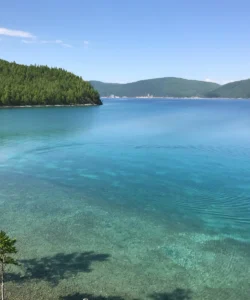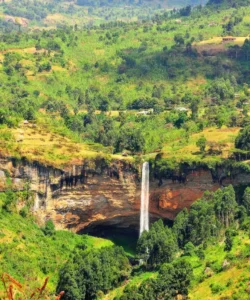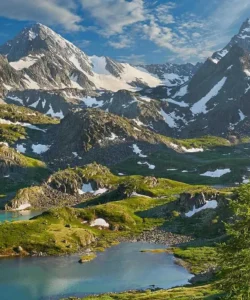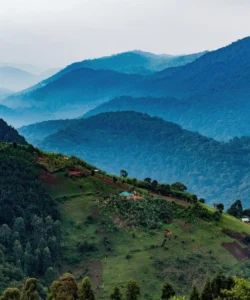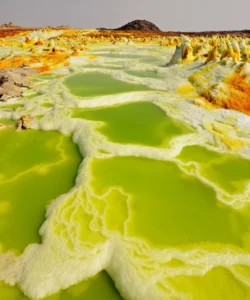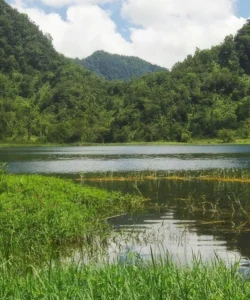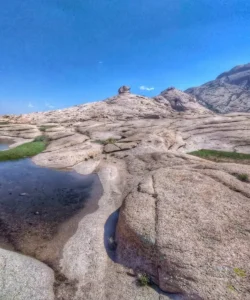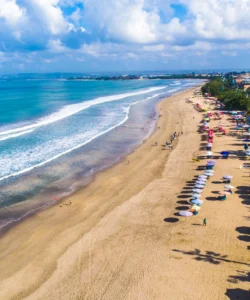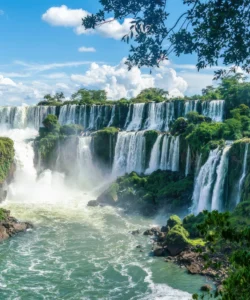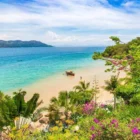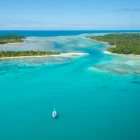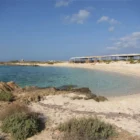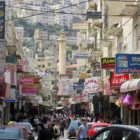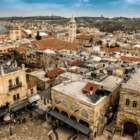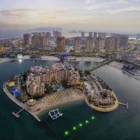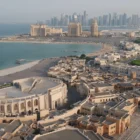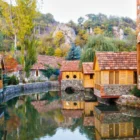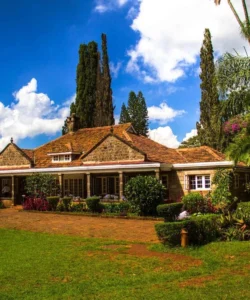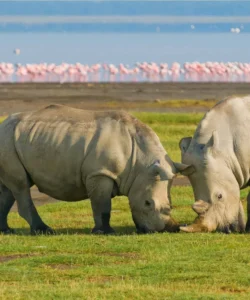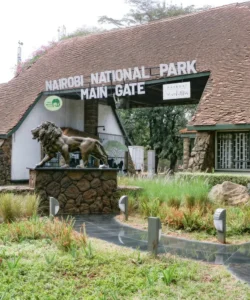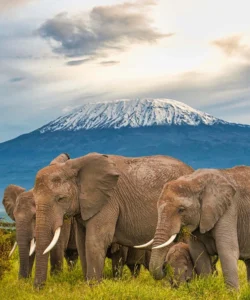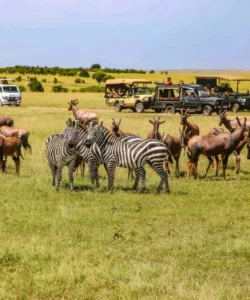The Raja Ampat Islands, meaning “Four Kings” in Indonesian, are an archipelago of unparalleled natural beauty located off the northwest tip of the Bird’s Head Peninsula in West Papua, Indonesia. This remote and breathtaking region is globally renowned as the epicenter of marine biodiversity and a true frontier for sustainable eco-tourism.
Listen to an introduction about Raja Ampat Islands

Name: Raja Ampat Islands (Pulau Raja Ampat) – derived from a local myth about a woman who found seven eggs, four of which hatched into kings who then ruled the four main islands: Waigeo, Batanta, Salawati, and Misool.
Address: Raja Ampat Islands are part of the Southwest Papua Province, Indonesia. The main gateway to the archipelago is Sorong City (West Papua), which serves as the hub for flights and ferry connections to the islands. The administrative capital and primary entry point within the islands is Waisai, located on Waigeo Island.
How to Get There:
Reaching Raja Ampat is a multi-step journey, reflective of its remote and pristine nature, but the effort is immensely rewarding.
- By Air to Sorong (SOQ): This is the first essential step. There are direct flights to Domine Eduard Osok Airport (SOQ) in Sorong from major Indonesian cities like Jakarta (CGK) and Bali (Denpasar – DPS). Some international direct flights are also available from Singapore (SIN) and Kuala Lumpur (KUL) to Sorong.
- From Sorong to Waisai (Waigeo Island): Once in Sorong, you’ll transfer from the airport to Sorong’s public ferry harbor.
- Public Ferry: The most common and budget-friendly option. Ferries run regularly (usually twice daily on weekdays, with varying weekend schedules) and take about 2-3 hours to reach Waisai.
- Speedboat: More expensive but faster and more flexible, especially for transfers directly to resorts or liveaboards.
- From Waisai to Your Accommodation/Liveaboard:
- Resort Transfers: If staying at a land-based resort, they will usually arrange a speedboat transfer from Waisai directly to their location.
- Liveaboards: For diving or cruising, you’ll board your pre-booked liveaboard vessel in Waisai (or sometimes directly from Sorong for longer trips). Liveaboards are exceptionally popular here, allowing access to more remote dive sites and islands.
- Marine Park Entry Permit: Before entering the Raja Ampat Marine Park, all visitors are required to purchase an entry permit (often called a “PIN” or conservation tag), which helps fund the preservation of the marine ecosystem. This is usually purchased at the Waisai port or arranged through your tour operator.
Landscape and Architecture:
Raja Ampat’s landscape is a dramatic and breathtaking fusion of rugged karst geology, lush tropical islands, and an unimaginably vibrant underwater world. Its “architecture” is overwhelmingly natural, shaped by ancient geological processes and marine forces.
- Limestone Karst Formations: The archipelago is famous for its myriad of limestone karst islands (over 1,500 of them, large and small), which dramatically jut out of the turquoise waters. These islands are often mushroom-shaped, with sheer cliffs, hidden coves, and secret lagoons, covered in dense, emerald-green jungle.
- Wayag Islands: The iconic Wayag Islands are a pinnacle of this karst landscape. Here, countless cone-shaped limestone islets create a labyrinthine, otherworldly seascape that is incredibly photogenic, especially from elevated viewpoints.
- Pristine Beaches: The islands feature numerous pristine white-sand beaches that gently slope into the clear, warm waters. Some islands like those in the Fam (Piaynemo) group boast incredible viewpoints overlooking multiple crescent-shaped bays.
- Lush Rainforests: The larger islands (Waigeo, Batanta, Salawati, Misool) are covered in dense, untouched tropical rainforests, home to diverse terrestrial wildlife, including endemic birds of paradise.
- Unparalleled Marine Landscape: This is where Raja Ampat truly shines. Beneath the surface lies an aquatic wonderland of:
- Vibrant Coral Reefs: The healthiest and most biodiverse coral reefs on Earth, including hard and soft corals of every imaginable color and shape, often growing in massive, ancient colonies.
- Unique Underwater Topography: A diverse underwater landscape featuring walls, seamounts, caves, tunnels, and submerged mangroves.
- Nutrient-Rich Currents: Strong, nutrient-rich currents flow through the straits, feeding the coral and attracting a colossal abundance of marine life.
- Minimal Built Environment: In keeping with its remote and protected status, the islands have very little large-scale “architecture.” Accommodation primarily consists of eco-resorts, often featuring overwater bungalows or simple, rustic cabins built from local materials that blend harmoniously with the environment. There are no high-rise buildings or major urban developments. Local villages have traditional Papuan stilt houses.
- Ancient Cave Paintings: Misool Island, in the southern part of the archipelago, features prehistoric cave paintings (petroglyphs) on its limestone walls, offering a glimpse into ancient human presence.
What Makes It Famous:
- Global Epicenter of Marine Biodiversity (“Coral Triangle”): Raja Ampat is located at the heart of the Coral Triangle and is widely considered the most marine biodiverse region on Earth. It boasts an astonishing 75% of all known coral species, over 1,700 species of reef fish, 6 out of 7 marine turtle species, and numerous marine mammals (including whales, dolphins, and dugongs). New species are still being discovered regularly.
- World-Class Diving and Snorkeling: Its unparalleled underwater richness makes it the ultimate bucket-list destination for scuba divers and snorkelers. The sheer volume, health, and diversity of marine life in its crystal-clear waters are unmatched.
- Iconic Karst Landscapes (Wayag, Piaynemo): The dramatic, jungle-clad limestone karsts rising from the turquoise sea, particularly the visually stunning panoramas from viewpoints like Wayag and Piaynemo, are globally recognized and highly photogenic.
- Remote and Untouched Beauty: Despite its growing fame, Raja Ampat remains relatively remote and protected, offering an unspoiled, pristine natural environment that feels truly “off the beaten path.”
- Conservation Success Story: The region benefits from strong conservation efforts, including marine protected areas and sustainable tourism initiatives, ensuring its fragile ecosystem is preserved.
- Diversity of Marine Megafauna: It’s one of the best places in the world to encounter a wide array of large marine animals, including majestic manta rays (at famous cleaning stations), reef sharks, whale sharks, and various whale species.
- Birds of Paradise: The larger islands are also home to spectacular and endemic birds of paradise, offering unique birdwatching opportunities for land-based visitors.
Differences from Some Other Wonders:
- Unparalleled Marine Biodiversity: While other islands like the Perhentians or Redang are famous for diving, Raja Ampat’s sheer scale and concentration of marine biodiversity is globally unrivaled. It’s not just “good” diving; it’s the “best” in terms of species count and reef health.
- Karst Island Domination: While Komodo National Park has some volcanic islands, Raja Ampat’s landscape is predominantly defined by its myriad of steep, jungly limestone karst formations, creating a unique visual aesthetic above the water that differs from most other tropical archipelagos.
- Remote and Difficult Access (Intentional Preservation): Its multi-leg journey and the necessity of boat-based exploration contribute to its high cost and relative inaccessibility, which in turn helps preserve its pristine nature from mass tourism, unlike more easily reachable and developed island destinations.
- Focus on Liveaboard Experience: While land-based resorts exist, the liveaboard (Phinisi ship) experience is a quintessential part of a Raja Ampat trip for many divers and snorkelers, allowing extensive exploration of remote sites not easily reachable from a single resort.
- Absence of Major Land Animals: Unlike Komodo National Park with its iconic Komodo dragons, or African safaris with their “Big Five,” Raja Ampat’s primary wildlife focus is marine, with terrestrial wildlife generally being smaller and less central to the visitor experience (save for the birds of paradise).
- Prehistoric Art: The presence of ancient cave paintings and handprints on Misool’s karst walls adds a unique layer of prehistoric human heritage that is rare in marine-focused natural wonders.




















































